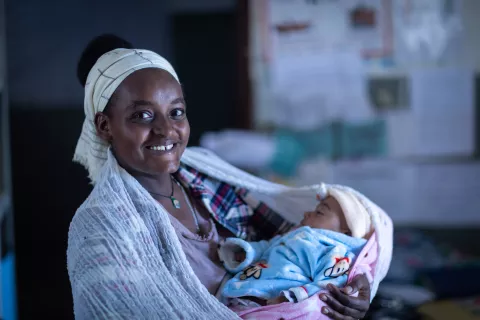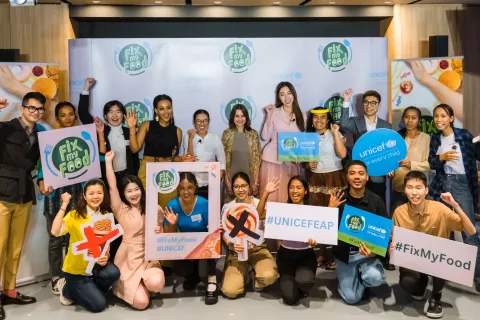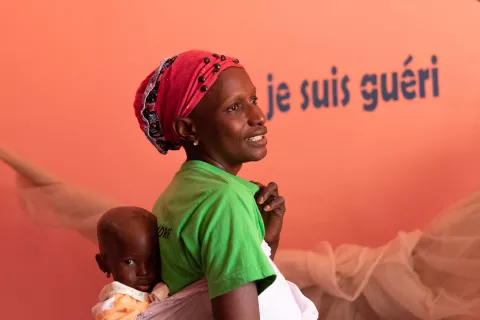Children in Senegal treated for malnutrition
UNICEF and China are supporting children in 15 African countries
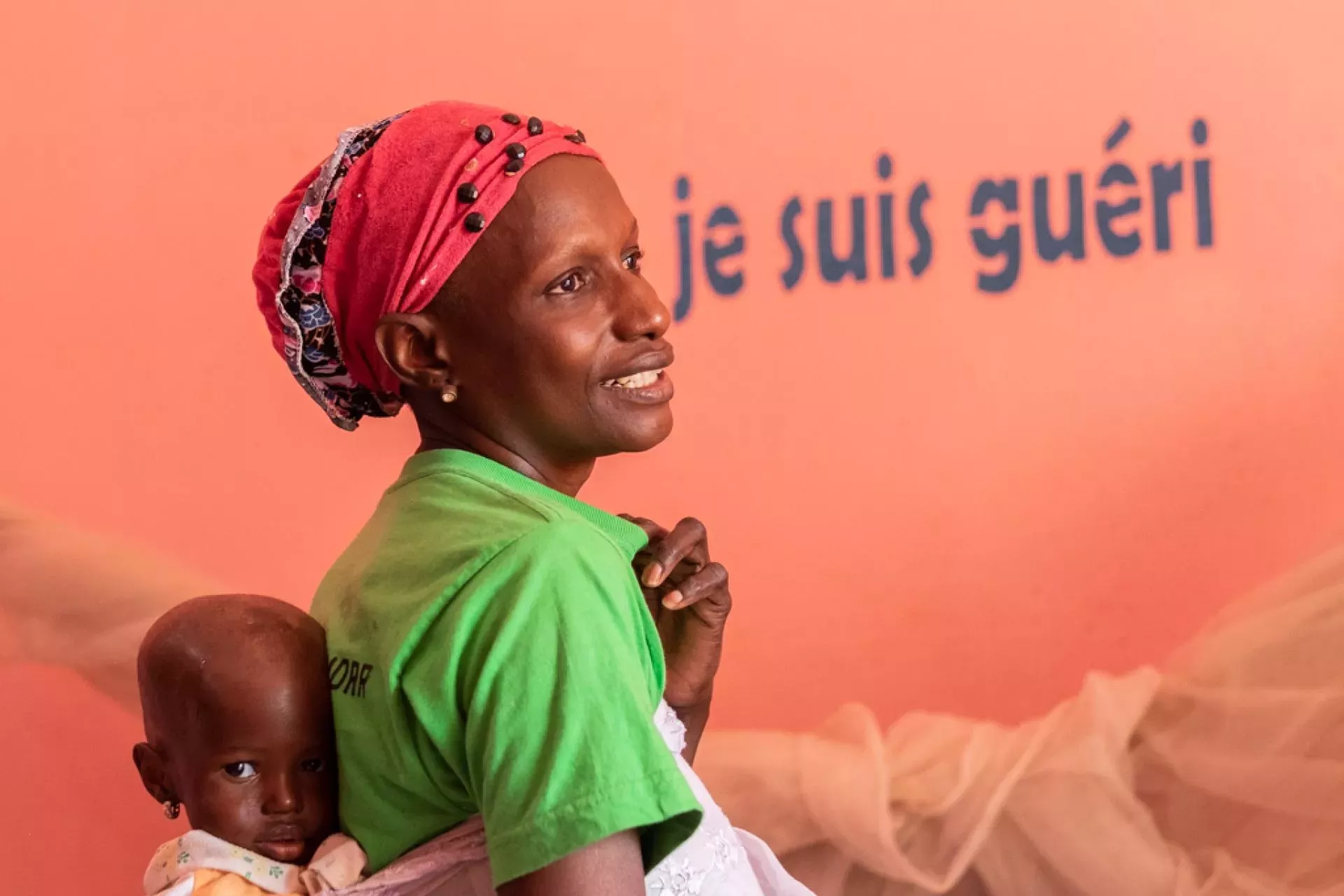
- Available in:
- 中文
- English
In Bignona, Senegal, a young mother Aïcha sits on bed with a furled mosquito net, in a bright pink health centre room. Together with a nurse in a white coat, she lays Nima on a measuring board. Although it’s not painful, the girl cries and grabs her mum’s hand as the nurse holds her legs straight to measure her height. Later, the nurse also checks her weight.
Aïcha recalls her concern when she saw the health of her two-and-a-half-year-old daughter deteriorate. “I noticed Nima had a fever, loss of appetite and diarrhoea,” she says. Worried about Nima’s condition, Aïcha brought her to hospital. “I was told she had severe acute malnutrition. They hospitalized her to take better care of her.”
The health workers at the centre found that Nima was far too thin for her height. She weighed only 4.2 kg, less than half of what WHO considers as ‘severely underweight’ for her age, and she was just 63 cm tall. Further tests confirmed a diagnosis of severe wasting with medical complications, meaning that Nima’s immune system was affected, and she was at risk of dying.
Impact of COVID-19
Nima is one of the 18,000 children in Senegal treated for severe wasting through a programme, run by UNICEF and funded by the Government of China, to help address the impact of the COVID-19 pandemic on children. Severe wasting, defined as low weight-for-height, is the most lethal type of malnutrition. It is caused by a lack of nutritious food and repeated bouts of diseases such as diarrhoea, measles and malaria, which compromise a child’s immunity. For children with severe wasting, common childhood illnesses can become killers.[1]
Globally, at least 13.6 million children under the age of five suffer from severe wasting. It is responsible for one in five deaths in this age group, making it one of the top threats to child survival. A severely wasted child is up to 11 times more likely than a healthy child to die of common childhood illnesses such as pneumonia, the single largest infectious cause of death in children worldwide.[2] Wasting cases often increase in areas affected by conflict and climate shocks, as well as the fallout from COVID-19 – precisely where the risk of child mortality is already highest. Some countries have seen a 40 per cent or more increase in child wasting since 2016.[3]
To address malnutrition, UNICEF works with the Government of Senegal on a nationwide nutrition programme. “In Senegal, we work to prevent malnutrition by improving children's access to nutritious, safe, affordable and sustainable diets,” UNICEF Senegal Nutrition Specialist Aminata Ndiaye Coly explains. “We support quality nutrition services and promote optimal feeding, including exclusive breastfeeding for the first six months of a child's life. The support from China helped us scale up this programme during COVID-19 to reach even more children with malnutrition. It saved many lives.”
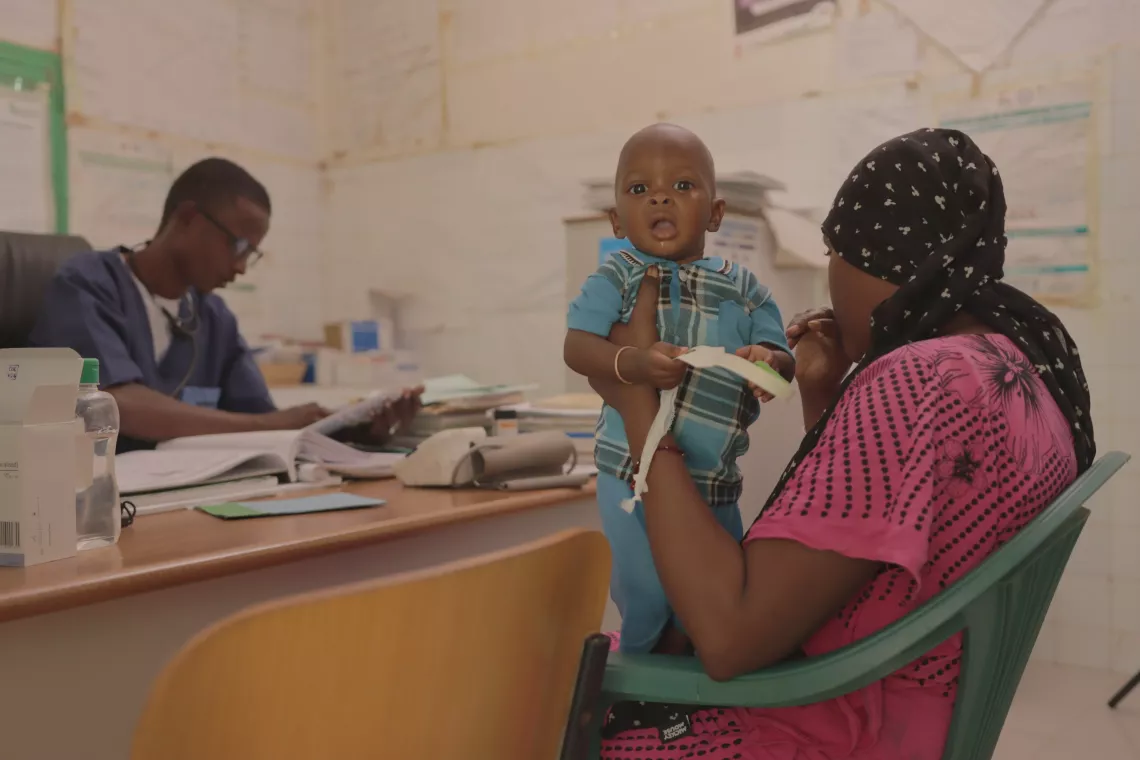
Community management
In Ranérou, the programme supported community management of acute malnutrition. This approach doesn’t just treat children with malnutrition; it also raises awareness among caregivers of the signs of malnutrition and encourages caregivers to take children to health facilities for examination.
At an outdoor marketplace in Ranérou, a health worker gets off a motorbike and approaches a mother in a blue and yellow dress. She sits with her young child on an empty stall beneath a roof made of thatched twigs, that provides some shade from the sun. It’s dry season and the ground underfoot is bare earth, with yellowed grass at the side of the road. The health worker gives her a health information leaflet and examines her child, a young boy in a blue checked shirt.
“Before awareness was established in the area, children were not examined as they used to be [before COVID-19]. The mothers were afraid of coming to the health centre to get treatment,” Head Nurse for Ranérou Ferlo Samba Ba comments. “With support from UNICEF and China, we have seen an increase in clinic visits and children are consulted as necessary.”
Global partnership
In Beijing, UNICEF Chief of Public Partnerships Sae-Ryo Kim reflects on the children’s agency’s wider collaboration with the Government of China. “China has made considerable progress over the last 40 plus years, and now has the knowledge financing to support other countries through South-South cooperation,” she says. “UNICEF and CIDCA are collaborating to support children in 15 African countries. We look forward to continuing to work together to support children in other parts of the world.”
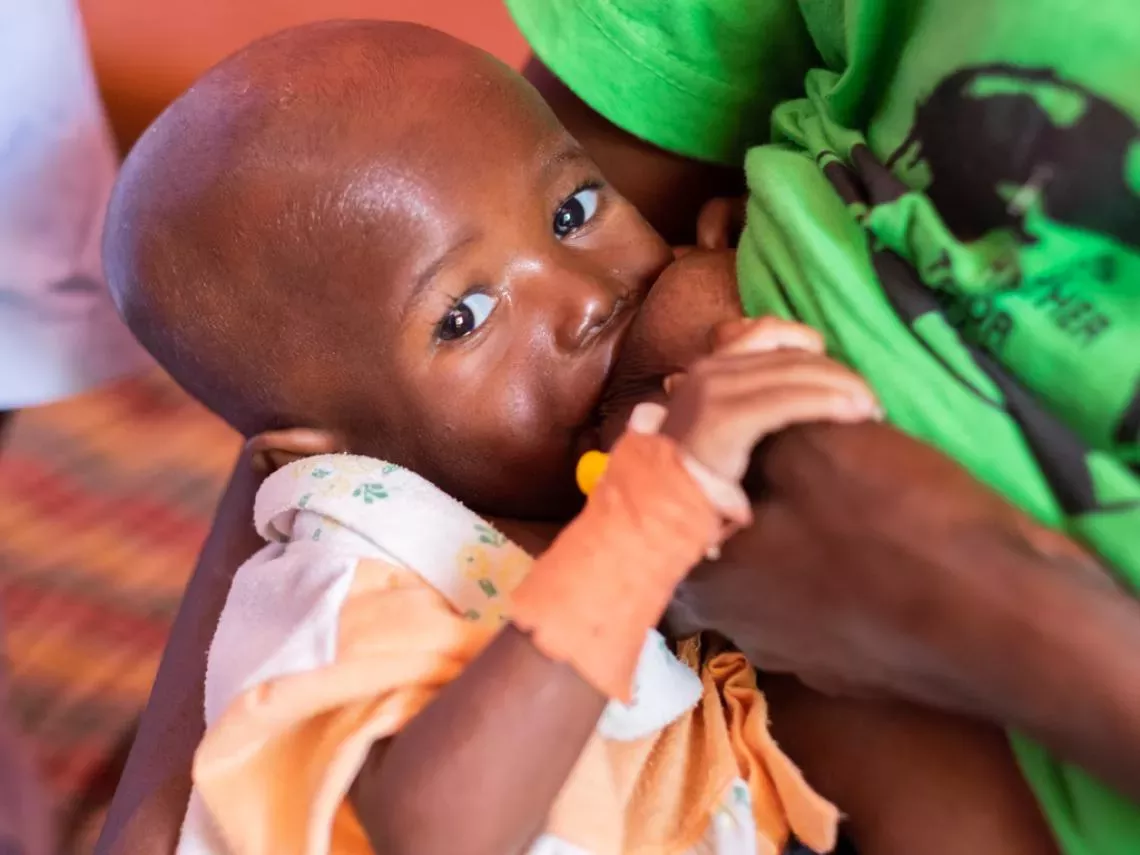
Back in Bignona, with medication, milk and some tips for Aïcha for treating fever, Nima is on the road to recovery. “She was given medication and [fortified] milk, which has been drinking. This is how she gradually regained her appetite,” Aïcha says. “Since I’ve been in hospital, the health workers have taken good care of her. She has begun to gain weight.”
UNICEF is working to expand this life-saving work, so that more children like Nima can receive the care they need to survive and thrive. UNICEF’s partnership with China has now been expanded to 20 countries in Africa and Asia, including Laos and Timor-Leste, helping to ensure that the benefits of China’s remarkable economic growth are shared with some of the most vulnerable children around the world.
[1] https://www.unicef.org/child-alert/severe-wasting
[2] https://www.unicef.org/child-alert/severe-wasting
[3] https://www.unicef.org/media/120346/file/Wasting%20child%20alert.pdf



